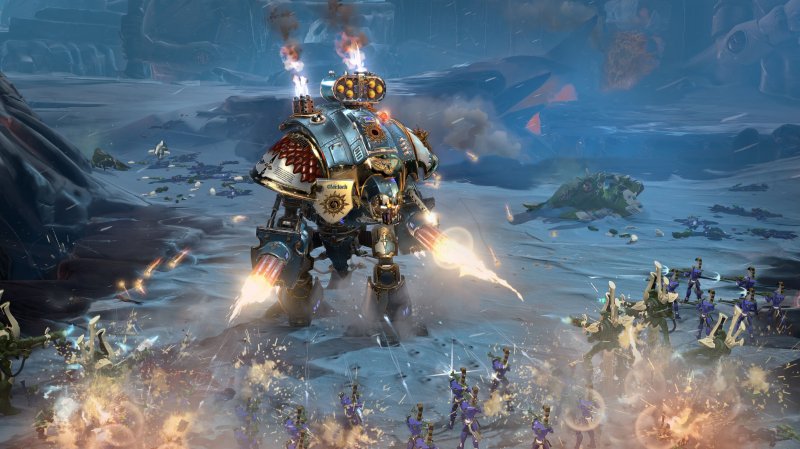As said, the “offline” campaign is gratifying: someone will be able to turn up their noses on the fact that we must alternate at the head of the three factions (Space Marines, Orki and Eldar), but at the end this choice “to the Call of Duty”
has been studied at a table. The new title of Relic is in fact heavily oriented to multiplayer and single player mode, not without some poetic license (there will be missions very similar to those of the second chapter, situations not currently replicable online), is basically a gym for challenges with other players.
The hard and pure will not appreciate the new gameplay, also penalized by the lack of content
M’OBA OR NOT M’OBA?
There are several question marks that the public beta has not managed to dispel, and the first of all at the bottom is that concerning the future development of Dawn of War. Three factions on the table seem too few, however much a sacred monster like StarCraft has “recently” proved that quantity does not make quality.
Yet a bit ‘of bitterness in the mouth remains above all turning his back and looking at the offer of the progenitor, class 2004, which at least added the Chaos Marines to the list of breeds selectable.
The most striking thing however is the presence of a single game mode, called the core, which is taken by weight from the MOBA universe. In fact, in order to win the game it is not necessary to eliminate the opponent, but you must instead pull down a core of energy, placed in a critical point of the map, not before eliminating two supporting structures that defend it: in order the shields and the towers.
It is not necessary to break down all those present: just open a line that reaches the nucleus to be able to launch the definitive attack. This is one of the aspects that is likely to create more confusion, since many believe that with this choice the Canadian developers have directed their latest effort towards an exaggeratedly arcade drift.
Suspicions also confirmed by other clues, such as the absence of cover (now there are only outposts in which to guard the units, but who return to the mercy of the adversaries as soon as they leave), the lesser importance given the firing of suppression, the absence of details such as the moral and the experience that made both the garrison of the territory and the health of the single units important.
The role of the defensive turrets has also been drastically reduced: the only breed that can rely on “traditional” structures is that of the Orks, who can however build a maximum of five. The Eldar have portals that can provide bonuses to the troops in the area, but are not able to defend themselves;
TIN ELITE
The introduction of Elite units has moved the focus of the gameplay because, if used “correctly” (ie exploiting the various active skills that increase with experience), these super soldiers, especially those of high level, move significantly balance of a battle.
Yet it is not entirely correct to de-standardize the standard units to mere slaughter meat: at the moment there is some inevitable balancing error (for example, the Orki Elikottero has seemed basically useless, and even the elite Pikkoletta has not proved at the height of the majestic Lady Solaria of the Blood Ravens), but each has its own dignity especially if related to the number of resources needed to produce it.
It will soon be understood that the listening points never seem to be able to satisfy the player’s war needs, at least in the initial stages of the game; in fact, things change as the number of minutes increases, according to the rule called Escalation. Following this logic in the first ten minutes of play the player recovers 25% from the death of their units; from the tenth to the twentieth the percentage drops to 15,
but both the amount of resources collected from the listening points and the health of the buildings increase by 50%. From the twentieth to the half hour, the recovery of resources from the killing of their units is reduced, but doubles the rate of extraction, until reaching the final level in which there is no longer any benefit in sending their men to slaughter, but on the other hand the resistance of buildings and resources reach stellar values.

